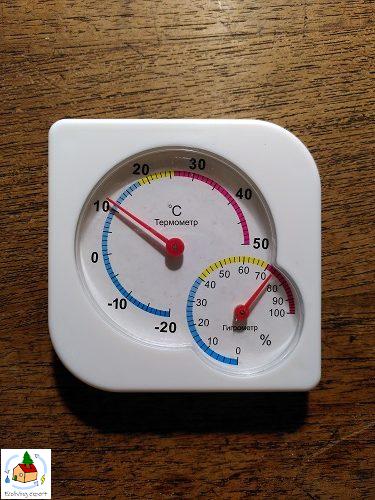Infrared heaters produce infrared radiation rather than warm air. This form of heating does not dry out the air since the temperature of the air does not increase. Conventional warm-air heaters lower the relative humidity of the air, making it dryer. The relative humidity of the air stays the same when using infrared heating.
Why conventional heaters make the air feel dryer
Conventional heaters such as a central heating system, an electric heater, or a fireplace, heat up the air. Since the amount of water vapor in the air stays the same, the so-called relative humidity (RH) decreases. This makes it feel like the air is dry, and can lead to several health effects related to low relative humidity.

What is relative humidity exactly?
The relative humidity is the percentage of water vapor in the air compared to how much water the air can contain. If the temperature of the air is high, it can contain more water vapor than if it is cold. Therefore, the amount of water vapor is low compared to what the air can contain (= the relative humidity is low). This makes the air feel dry.
To better visualize what relative humidity means, let’s consider the following. If the relative humidity would increase to 100% (e.g. by a drop in temperature), meaning no more water can be contained by the air, we start to be able to see the water content in the air in the form of mist.
The relative humidity is measured with a hygrometer, which is often included with a thermometer and is very cheap to purchase at your local store. See the picture below for my own cheap temperature + hygrometer.
We feel most comfortable at a relative humidity between 40 and 60%. Therefore, when heating the air and subsequently lowering the relative humidity, we start to experience symptoms related to dry air.
These symptoms include:
- dry eyes
- dry skin
- sore throat
- dehydration
- increased respiratory issues
We start experiencing these symptoms when the relative humidity drops below 40%.
The following picture shows the readings of my cheap temperature and hygrometer during wintertime in the Netherlands (Western Europe).

As you can see in the picture, the hygrometer on the bottom-right shows a relative humidity of about 75%. This measurement was done when we did not run the warm-air heater for the night. Therefore, the temperature is low, and subsequently, the relative humidity is high.
Keep in mind that your condition may differ from the Netherlands. Here we continuously have very high humidity, while in other parts of the world humidity tends to be low.
Why infrared heating does not dry the air
Infrared heating does not dry the air because the air is not being heated. Since the air is not heated (infrared radiation directly heats people and objects), the relative humidity does not change. Therefore, we do not experience any symptoms of dry air (if we did not already).
Infrared heating works differently from conventional warm-air heaters. They emit infrared radiation, which is the same heat we feel from the sun. However, infrared heaters only emit infrared, while the sun emits many different kinds of radiation.
For more information about how infrared heating works, I recommend reading my article: How do infrared panels work? A simple explanation.
Since infrared heaters only emit infrared and for example no UV, they are completely harmless. You can read all about the health effects of infrared heating in my article: Can infrared heaters cause health problems?

